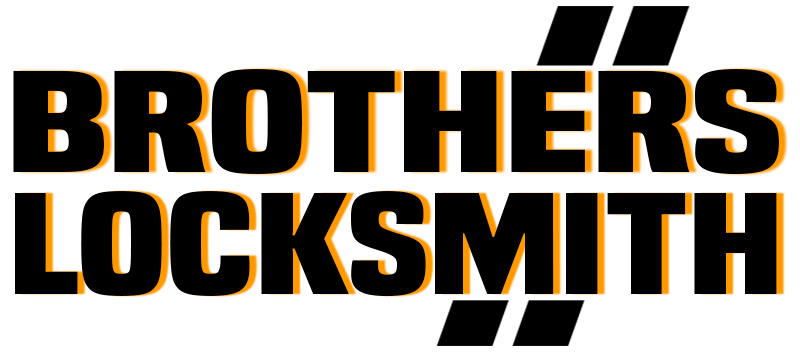What to Do When Car Won't Open from Inside
Facing the predicament of a car door that refuses to open from the inside can be both frustrating and concerning for any driver. Whether you're in a hurry to get somewhere or stranded in a remote location, knowing how to address this issue promptly is crucial. In this guide, we'll explore the steps to take when encountering a car door that won't open from the inside, covering common causes, troubleshooting techniques, alternative entry methods, and safety precautions. By understanding what to do in such situations, you can navigate through this inconvenience with confidence and ensure the safety and security of yourself and your passengers.
Read more about Dangers of broken car door!
Understanding the Problem
Common Causes
- Mechanical Issues: Mechanical problems with the door latch mechanism or linkage can prevent the door from opening from the inside. This could result from worn components, misalignment, or obstructions within the door assembly.
- Electrical Malfunctions: Electrical issues, such as a malfunctioning door lock actuator or wiring problems, can also cause difficulty in opening the door from the inside. Faulty electrical connections or damaged components may disrupt the operation of the door lock system.
- Safety Features Activation: Modern vehicles are equipped with safety features that may prevent doors from opening under certain conditions, such as during vehicle movement or when the vehicle is not in park. In some cases, safety systems may engage unexpectedly, hindering the door's operation.
Read more about Key won't go in ignition!
Identifying the Cause
Identifying the specific cause of the problem requires a systematic approach to troubleshooting. Begin by assessing the symptoms and observing any unusual behavior exhibited by the door mechanism. Conduct a visual inspection of the door components, including the latch, handles, and surrounding area, to check for visible signs of damage or obstruction. Additionally, diagnostic tools may be used to assess electrical components and detect any faults in the system. By systematically investigating the potential causes, you can determine the underlying issue and proceed with the appropriate steps for resolution.
Initial Troubleshooting Steps
Check the Lock Mechanism
- Testing the Door Handle: Begin by attempting to open the door using the interior door handle. Apply gentle pressure and listen for any unusual sounds or resistance. If the door handle feels loose or fails to operate smoothly, there may be a mechanical issue with the latch mechanism.
- Inspecting the Lock Buttons: Check the lock buttons or switches on the door panel to ensure they are in the correct position. Sometimes, inadvertently activating the lock button can prevent the door from opening. Verify that all lock buttons are in the unlocked position before attempting to open the door.
Verify Child Lock Settings
Ensure that the child lock feature, if equipped, is not engaged. Child locks are designed to prevent the rear doors from being opened from the inside, providing additional safety for young passengers. If the child lock feature is enabled, it may restrict the door's operation from the inside. Refer to the vehicle's owner's manual for instructions on how to disable the child lock function.
Check Battery Levels and Connections
Inspect the battery levels and connections in the vehicle to rule out electrical issues as a potential cause of the door lock malfunction. A weak or discharged battery may affect the operation of electrical components, including the door lock system. Check the battery terminals for corrosion or loose connections and ensure that the battery is adequately charged. If necessary, jump-start the vehicle or replace the battery to restore power to the door lock system.
Alternative Entry Methods
Using the Key
- Manual Key Entry: If equipped with a traditional key lock, use the manual key entry method to unlock the door. Insert the key into the door lock cylinder and turn it to unlock the door manually. This method bypasses electronic components and provides a direct means of accessing the vehicle.
- Keyless Entry Systems Override: Some vehicles may feature a keyless entry system with an emergency override function. Refer to the vehicle's owner's manual to identify the location of the emergency key slot or override button. Use this feature to bypass electronic locking mechanisms and gain access to the vehicle in case of a malfunction.
Accessing Trunk or Rear Seats
Consider accessing the vehicle through alternative entry points, such as the trunk or rear seats, if the doors cannot be opened from the inside. Depending on the vehicle's design, accessing the trunk or rear seats may provide an alternative means of entry. Keep in mind that this method may require manual manipulation of interior components to release the doors or seats.
Emergency Release Mechanisms
Some vehicles are equipped with emergency release mechanisms designed to facilitate exit in emergency situations, such as becoming trapped inside the vehicle. These mechanisms are typically located near the door latch assembly and can be activated manually to release the door from the inside. Refer to the vehicle's owner's manual for instructions on locating and operating the emergency release mechanism. Use this feature as a last resort if all other entry methods fail.
Temporary Solutions and Workarounds
Applying Lubrication to the Lock Mechanism
Consider applying a lubricant, such as graphite or silicone spray, to the door lock mechanism to alleviate any friction or binding that may be causing the issue. Apply the lubricant according to the manufacturer's instructions and operate the door handle to distribute the lubricant evenly.
Resetting Electrical Systems
If the issue appears to be related to electrical malfunctions, try resetting the vehicle's electrical systems by disconnecting the battery terminals for a few minutes and then reconnecting them. This may reset the vehicle's electronic control modules and restore normal operation of the door lock system.
Disabling Safety Features (if Safe and Legal)
In certain situations, it may be necessary to temporarily disable safety features that are preventing the door from opening. However, exercise caution and ensure that disabling safety features is safe and legal. Refer to the vehicle's owner's manual for guidance on how to disable specific safety features, if necessary.
Seeking Professional Assistance
Contacting Roadside Assistance
If you are unable to resolve the issue on your own, consider contacting roadside assistance for professional help. Roadside assistance services have the expertise and equipment to address a wide range of vehicle issues, including door lock malfunctions, and can provide timely assistance wherever you are.
Consulting a Mechanic or Auto Technician
For more complex issues or persistent problems with the door lock system, it may be necessary to consult a mechanic or auto technician. A qualified professional can diagnose the root cause of the problem and recommend appropriate repairs or replacements to restore the functionality of the door lock system.
Safety Precautions
Ensuring Personal Safety
Always prioritize personal safety when attempting to troubleshoot or address issues with the vehicle. Exercise caution when working around moving parts or electrical components, and avoid putting yourself in dangerous situations.
Avoiding DIY Repairs if Unsure
If you are unsure about how to safely address the issue or lack the necessary tools and expertise, avoid attempting DIY repairs. Improperly performed repairs can lead to further damage or injury. Instead, seek professional assistance from qualified professionals.
Following Manufacturer Guidelines
Refer to the vehicle's owner's manual and follow manufacturer guidelines when troubleshooting or performing maintenance tasks. Manufacturer recommendations provide valuable insights into proper procedures and safety precautions to ensure the vehicle's integrity and your safety.
Preventive Measures
Regular Maintenance Checks
Schedule regular maintenance checks for your vehicle to identify and address potential issues before they escalate. Inspect the door lock system, lubricate components as needed, and address any signs of wear or damage promptly to prevent future problems.
Keeping Spare Keys Accessible
Keep spare keys accessible in case of emergencies, such as locking yourself out of the vehicle. Store spare keys in a safe and secure location, such as a key holder inside your home or with a trusted friend or family member.
Understanding Vehicle Features and Functions
Familiarize yourself with your vehicle's features and functions to better understand how to troubleshoot and address issues as they arise. Understanding the operation of the door lock system and other critical components can help you respond effectively in emergency situations.
Conclusion
In conclusion, encountering a car door that won't open from the inside can be a frustrating experience, but there are steps you can take to address the issue and ensure your safety and convenience. By following the outlined temporary solutions, seeking professional assistance when needed, prioritizing safety precautions, and implementing preventive measures, you can effectively address door lock malfunctions and minimize the risk of future incidents. Remember to stay calm, assess the situation carefully, and take appropriate action to resolve the issue promptly and safely.
Call Us Any Time!









